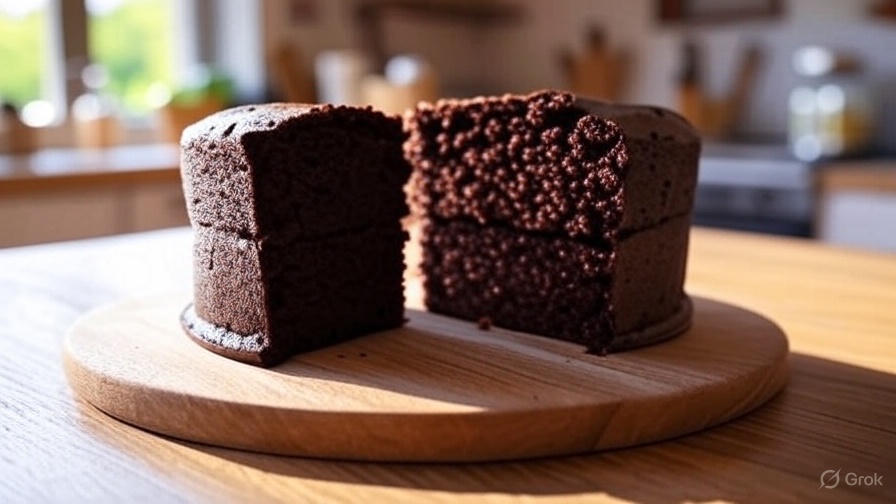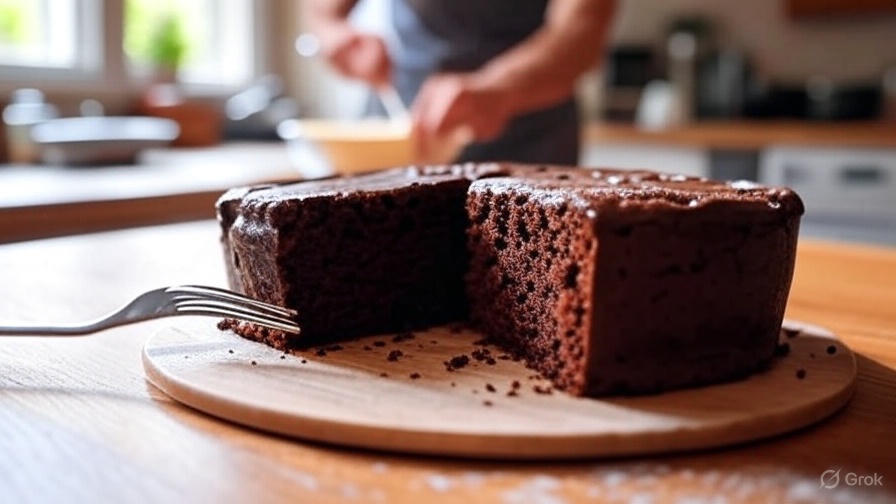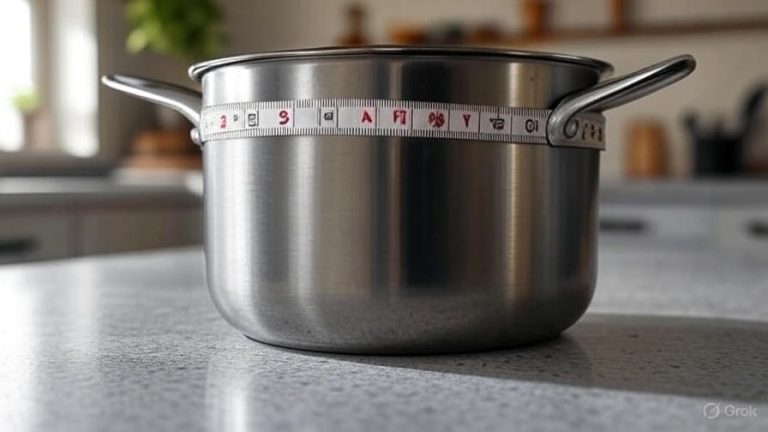How Can I Make a Cake More Moist?
Nothing disappoints a baker more than cutting into a cake only to discover it’s dry and crumbly. You spend hours mixing, measuring, and baking, yet somehow your cake turns out less than perfect. The good news? You can transform any ordinary cake recipe into a moist, tender masterpiece with the right techniques and ingredients.
Moist cakes don’t happen by accident. They result from understanding how ingredients work together and applying specific methods that lock in moisture. This comprehensive guide reveals professional baking secrets that will revolutionize your cake-making skills and guarantee deliciously moist results every single time.
Why Cakes Turn Out Dry: The Science Behind Moisture Loss
Before diving into solutions, you need to understand what causes dry cakes in the first place. Several factors contribute to moisture loss during the baking process, and recognizing these culprits helps you prevent them.
Overbaking ranks as the number one reason cakes lose their moisture. When cakes stay in the oven too long, the proteins coagulate excessively, and water evaporates from the structure. The result? A dense, dry texture that no amount of frosting can rescue.
Incorrect flour measurements also wreak havoc on cake texture. Too much flour creates a heavy batter that absorbs available moisture, leaving you with a cake that feels like sawdust in your mouth. Many home bakers accidentally pack flour into measuring cups, adding 30% more flour than recipes actually call for.
Insufficient fat content represents another common mistake. Fats like butter, oil, and eggs provide richness and help retain moisture during baking. Recipes with too little fat produce cakes that taste bland and feel dry on the tongue.
Temperature extremes during baking can also steal moisture from your cake. Ovens that run too hot cause rapid moisture evaporation, while temperatures that are too low can lead to overbaking as you wait for the cake to finish cooking.
Essential Ingredients That Boost Cake Moisture
The foundation of any moist cake starts with the right ingredients. Certain components naturally attract and hold moisture, creating that tender crumb texture everyone craves.
Sour cream works like magic in cake recipes. This tangy dairy product contains both fat and acid, which tenderize gluten strands and create a softer texture. Replace up to half the butter in your recipe with sour cream for noticeably moister results. Greek yogurt serves as an excellent substitute if you don’t have sour cream on hand.
Brown sugar beats white sugar when it comes to moisture retention. The molasses content in brown sugar attracts water molecules from the air, keeping your cake moist even days after baking. Substitute half the white sugar in your recipe with packed brown sugar for enhanced flavor and texture.
Oil delivers superior moisture compared to butter alone. While butter provides flavor, oil contains 100% fat compared to butter’s 80% fat content. Vegetable oil, canola oil, or even melted coconut oil will keep your cake tender longer than butter-only recipes. Don’t replace all the butter – use a combination for the best of both worlds.
Buttermilk adds tanginess and tenderness to cake batter. The acid in buttermilk reacts with baking soda to create lift while simultaneously breaking down gluten for a more tender crumb. You can make homemade buttermilk by adding one tablespoon of lemon juice or vinegar to a cup of regular milk.
Applesauce serves multiple purposes in moist cake recipes. This fruit puree adds natural sweetness, moisture, and helps bind ingredients together. Replace up to one-third of the oil or butter with unsweetened applesauce for lighter, moister cakes.
Professional Mixing Techniques for Maximum Moisture
How you mix your cake batter dramatically affects the final texture. Professional bakers use specific techniques that home cooks often overlook, yet these methods make the difference between ordinary and extraordinary cakes.
The creaming method creates air pockets that hold moisture during baking. Beat butter and sugar together for at least 3-5 minutes until the mixture becomes light and fluffy. This process incorporates air while breaking down sugar crystals, creating a foundation for moist cake layers.
Room temperature ingredients mix more easily and create smoother batters. Cold eggs and dairy don’t incorporate properly, leading to lumpy mixtures that bake unevenly. Pull your eggs, milk, and butter from the refrigerator 30 minutes before baking to ensure optimal mixing.
The alternating method prevents overmixing while ensuring proper ingredient distribution. Add dry ingredients in three additions, alternating with wet ingredients in two additions. Begin and end with flour mixture, mixing just until ingredients disappear into the batter.
Stop mixing immediately once you no longer see streaks of flour. Overmixed batter develops tough gluten strands that create dense, chewy cakes. Use a rubber spatula for final mixing to maintain control over the process.
Scrape the bowl frequently during mixing to ensure even ingredient distribution. Unmixed pockets of flour or butter create inconsistent texture throughout your finished cake.
Baking Temperature and Timing Secrets
Proper oven technique separates amateur bakers from professionals. Small adjustments to temperature and timing can transform your cake from mediocre to magnificent.
Lower temperatures for longer times produce more evenly baked, moister cakes. Instead of baking at 375°F for 25 minutes, try 325°F for 35-40 minutes. The gentler heat allows moisture to distribute evenly throughout the cake while preventing the outside from overcooking.
Use an oven thermometer to verify actual temperatures. Many home ovens run 25-50 degrees hotter or cooler than their displays indicate. Accurate temperature control ensures consistent results every time you bake.
Test for doneness properly to avoid overbaking. Insert a toothpick into the center of the cake – it should come out with a few moist crumbs clinging to it, not completely clean. Cakes continue cooking from residual heat even after leaving the oven.
Position racks correctly for even baking. Place your cake pans on the center rack of the oven, ensuring adequate space between pans and oven walls for proper air circulation.
Rotate pans halfway through baking time if your oven has hot spots. This simple step prevents uneven browning and ensures uniform texture throughout your cake layers.
Simple Syrup and Glaze Applications
Professional bakers rarely serve cakes without adding extra moisture after baking. Simple syrups and glazes penetrate cake layers, adding flavor while keeping them moist for days.
Simple syrup recipe basics require equal parts sugar and water, heated until sugar dissolves completely. Cool the syrup before using, and consider adding extracts, liqueurs, or fruit juices for enhanced flavor. Vanilla, almond, or rum extracts work beautifully in most cake applications.
Apply syrup while cakes are warm for maximum absorption. Brush syrup generously over cake layers, allowing each application to soak in before adding more. Don’t worry about using too much – the cake will absorb what it needs.
Coffee enhances chocolate cakes remarkably well. Brew strong coffee, add a touch of sugar, and brush over chocolate cake layers. The coffee intensifies chocolate flavor while adding moisture that lasts for days.
Fruit juices create natural syrups that complement specific cake flavors. Orange juice works wonderfully with vanilla or citrus cakes, while apple juice pairs beautifully with spice cakes.
Cream cheese glaze provides richness along with moisture. Thin cream cheese frosting with milk or cream until it reaches brushing consistency, then apply over warm cake layers.

Storage Methods That Preserve Moisture
Even the most perfectly baked cake will dry out without proper storage. Smart storage techniques keep your cakes moist and delicious for days after baking.
Plastic wrap applied directly to unfrosted cake surfaces prevents moisture loss. Press the wrap gently against the cake, ensuring no air pockets remain. This method works especially well for storing cake layers before assembly.
Airtight containers maintain humidity around your finished cakes. Glass or plastic containers with tight-fitting lids create the ideal environment for moisture retention. Add a slice of bread to the container – it will release moisture gradually, keeping your cake tender.
Refrigeration helps some cakes while harming others. Cakes with dairy-based frostings require refrigeration, but the cold air can dry out the cake itself. Wrap refrigerated cakes carefully and bring them to room temperature before serving for best texture.
Freeze individual slices for long-term storage. Wrap each slice tightly in plastic wrap, then aluminum foil, before freezing. Properly wrapped cake slices maintain their moisture and flavor for up to three months in the freezer.
Room temperature storage works best for most unfrosted cakes. Keep them covered in a cool, dry place away from direct sunlight and heat sources.
Troubleshooting Common Moisture Problems
Even experienced bakers encounter moisture issues occasionally. Recognizing common problems and their solutions helps you adjust your technique for consistently better results.
Dense, heavy cakes often result from too much flour or overmixing. Measure flour by spooning it lightly into measuring cups, then leveling with a knife. Avoid packing flour, which can add 30% more than intended.
Dry edges with moist centers indicate oven temperature issues. Your oven likely runs too hot, causing the exterior to set before the interior finishes cooking. Reduce temperature by 25 degrees and extend baking time accordingly.
Cakes that seem moist when warm but dry when cool lack sufficient fat content. Increase oil, butter, or sour cream in your recipe by 2-3 tablespoons for better moisture retention.
Uneven texture throughout suggests inadequate mixing or ingredient temperature problems. Ensure all ingredients reach room temperature before mixing, and scrape bowls thoroughly during preparation.
Cakes that dry out quickly after baking need simple syrup applications or better storage methods. Apply flavored syrup while cakes are still warm, and store properly to maintain moisture levels.
Special Techniques for Different Cake Types
Different cake styles require specific approaches to maximize moisture. Adapting your technique to match cake type ensures optimal results across various recipes.
Chocolate cakes benefit from coffee additions. Replace some liquid in chocolate cake recipes with brewed coffee to intensify flavor while adding moisture. Hot coffee also helps bloom cocoa powder, creating richer chocolate taste.
Vanilla and yellow cakes respond well to sour cream. Replace up to half the butter with sour cream for incredibly tender results. The tangy flavor complements vanilla beautifully while creating superior texture.
Spice cakes love applesauce additions. The fruit puree enhances warm spices while contributing natural moisture and subtle sweetness. Combine applesauce with oil rather than replacing all fat for best results.
Citrus cakes require careful balance. Citrus juices add flavor but can make batters too acidic, affecting texture. Balance citrus additions with extra sugar and consider adding citrus zest for flavor without excess liquid.
Pound cakes need gradual mixing. These dense cakes require careful attention to mixing technique. Cream butter and sugar thoroughly, add eggs one at a time, and alternate flour and liquid additions slowly.
Ingredient Substitutions That Maintain Moisture
Sometimes you need to modify recipes due to dietary restrictions or ingredient availability. Smart substitutions can maintain or even improve cake moisture while accommodating different needs.
Greek yogurt replaces sour cream effectively in most recipes. Use the same amount as called for sour cream, but choose full-fat varieties for best moisture results. Greek yogurt adds protein while maintaining tangy flavor.
Coconut oil substitutes for butter in many applications. Use melted coconut oil in the same amount as butter, but ensure other ingredients are at room temperature to prevent the oil from solidifying in the batter.
Mashed bananas add natural moisture while reducing fat content. Replace up to half the oil or butter with mashed ripe bananas for naturally sweet, incredibly moist cakes.
Dairy-free milk alternatives work well in most cake recipes. Almond milk, oat milk, or coconut milk can replace regular milk without significantly affecting texture. Choose full-fat versions when possible.
Egg substitutes maintain binding properties while accommodating allergies. Commercial egg replacers, flax eggs, or applesauce can replace eggs in many recipes, though texture may vary slightly.
The Perfect Moist Cake Formula
Combining all these techniques creates a foolproof approach to moist cake baking. Start with recipes that include moisture-rich ingredients, use proper mixing techniques, bake at appropriate temperatures, and finish with moisture-preserving applications.
Your ingredient list should include fats like oil or sour cream, acidic components like buttermilk or brown sugar, and proper ratios of wet to dry ingredients. Mix ingredients at room temperature using appropriate techniques for your cake type, and bake at moderate temperatures with careful timing.
Apply simple syrup or glaze while cakes are warm, store properly to maintain moisture, and serve at room temperature for best texture. These steps, applied consistently, guarantee moist, delicious cakes every time you bake.
Remember that baking is both science and art. Understanding why techniques work empowers you to adapt recipes and troubleshoot problems confidently. With practice and attention to detail, you’ll consistently create moist, professional-quality cakes that impress every time.
The journey to perfect moist cakes requires patience and practice, but the results are worth every effort. Your family and friends will notice the difference immediately, and you’ll gain confidence in your baking abilities. Start implementing these techniques today, and prepare to enjoy the moistest, most delicious cakes you’ve ever created.







